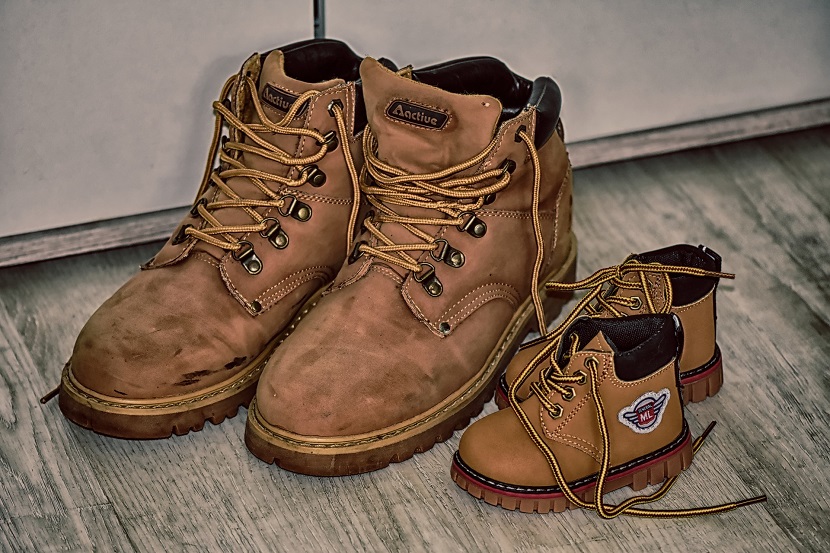“Safety is a common denominator across all aspects of life…” Doug Bourne
After working in a manufacturing environment for 2 years, I have developed a great appreciation for a good safety culture. Adhering to solid safety practices and policies, while irritating at times, kept us all going home at the end of the day in the same condition in which we arrived. Taking the time to stop and think about the hazards involved in a non-routine task gives one a new perspective on what is out there that could hurt you.
So, when I returned home and helped my parents with some work around the house, I found myself subconsciously applying these practices to the chores we were doing. I was looking for hazards and thinking of how to protect us even though we were in a quiet suburban house. One part of me, upon realizing this, thought “Quit being so uptight, you can relax and take it easy. You’re not at work. You don’t have to do a JSA for this.”
Why though, should it have made a difference whether I was at work or at home? There were still hazards involved in what we were doing, and my health and safety were no less important here than there. Why shouldn’t I practice good safety at home?
Why is Safety Important at Home?
Our potential for harm doesn’t end just because we leave work. Many of the same hazards are still present: falls, fire, electrical, chemical, tools, etc. In fact, statistical organizations like the Bureau of Labor Statistics and National Safety Council rank slips, trips, and falls in the top three causes of injury in both the home and the workplace.
If you get injured at home, it will affect your ability to work. Does this mean one should be complying with safety regulations at home? No, the scale and rate of such hazards are much smaller. There isn’t as great a need for the programs required in a manufacturing environment. Still, there are practices which would be beneficial if brought into the home, such as hazard recognition and the use of personal safeguards.
Recognizing Hazards in Jobs at the Home
One of the simplest things we can take home is the practice of pausing to think about the hazards of a task before jumping into it. Cleaning out the basement, for example.
You have 20+ years of accumulated furniture, children’s toys, broken items, and boxes upon boxes of memories. Your task is to clear and sort everything, getting rid of 90% of the contents of the room. Many people, having finally steeled themselves for the task over the course of months, would jump right in. Let’s, however, take a step back and consider the hazards first.
You’ll be carrying many large objects out of the room. Do you have a path clear of tripping hazards? Do you have enough help to lift the heaviest objects without straining yourself? What about if you can’t see over what you’re carrying, do you have someone to guide you?
What about that precarious pile of miscellaneous items and trash that has grown over the years. Can you disassemble the pile without it collapsing? If not, what can you do to keep it from falling on someone? Are there sharp objects in the pile? Maybe gloves would be prudent before diving in. What of the furniture that’s covered in cobwebs? Maybe a vacuum should be passed over it first to remove any biting bugs that may have taken up residence.
These are all scenarios that could easily result in injury if the proper precautions aren’t taken. The time taken to recognize the hazards is time well spent.
Safeguarding Yourself
Now think about personal protective equipment, PPE. Once hazards have been recognized, the next logical step is to take appropriate measures to safeguard ourselves against them.
Consider the task of mowing the lawn. When I was growing up, this was often my weekend chore, and I gave no thought to protective equipment. My only thought was to get the job done as quickly possible, collect my earnings, and get on with my young life. Many adults share that outlook, as one need only look outside to see the neighbors mowing in shorts and flip flops.
Once we consider the hazards of mowing the lawn, we should then take the appropriate measures to safeguard ourselves. Safety glasses and sturdy clothes would protect against objects thrown by the mower. Ear plugs or muffs would guard our hearing from the noise of the mower. Sturdy work shoes would help prevent injuries to the feet or ankles should one slip or trip. Gloves could prevent blisters from handling the mower or cuts when dealing with clippings. All good things, yet many don’t use them when someone isn’t there to make them. Perhaps we should make this a conscious effort.
Let’s take Safety Home
The point of a workplace safety program is to protect a company’s most valuable asset: its people. That same mindset should follow each and every one of us when we clock out at the end of the day. We don’t need to start a whole safety program in the home but bringing some of those practices with us when we leave work can be advantageous.
Take the time to consider the hazards of a job and utilize appropriate safeguards and PPE. It will be well worth the little time and effort it requires. Additionally, let’s talk about safety with those who may not be exposed to it daily: our partners, parents, friends, and children. These practices benefit anyone, not just those use them at their job. Health and safety are just as important when we leave work as when we arrive, so we should act like it and take appropriate measures to recognize and avoid hazards at home.
